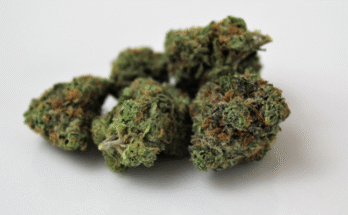Centered at nearly 10,000 feet in western China’s Pamir Mountains, the Jirzankal Cemetery has revealed a secret:
2,500 years ago, mourners gathered around wooden braziers filled with hot stones, burning cannabis to fill tents with psychoactive smoke during burial rituals.
Yeah, they were hot-boxing at funerals.
Turpan Basin: The Cannabis Burial Shroud
In China’s Turpan Basin, archaeologists uncovered the remarkably preserved remains of a man buried around 2,400–2,800 BCE, covered with thirteen intact cannabis plants.
These plants, carefully placed like a shroud over his chest, included resin-rich flower parts, indicating they were selected for their psychoactive potency, not fibre use.
This marks the first archaeological evidence of whole cannabis plants used as a funerary garment.
Ancient Ceremony
High in the Pamir Mountains (~3,000 m elevation), at the Jirzankal Cemetery (~500 BCE), researchers found wooden braziers (akin to ancient bongs) used to burn cannabis with hot stones.

The setup resembles a collective hot-box: smoke-filled tents, heated stones atop cannabis, communal inhalation.
Accompanying artifacts (like harps, ritual bone injuries, and burial structure) hint at a multi-sensory ceremony combining music, smoke, and perhaps sacrifice to guide souls or commune with spirits.
Chemical residue analysis revealed high levels of CBN (a byproduct of THC combustion), and an absence of CBD.
Compared to low-potency fibre varieties, the residue suggests high-THC plants were used, potentially deliberately cultivated or foraged from wild mountain strains with naturally elevated THC due to UV exposure
This suggests the necropolis was host to communal rituals where mourners intentionally smoked cannabis to alter consciousness.
A Widespread Tradition
The Turpan burial complements similar evidence from the Altai Mountains, where Siberian burials contained cannabis seeds and traces, likely used in healing or spiritual rites.
Ancient Greek historian Herodotus also documented Scythians burning cannabis to cleanse and connect. And his accounts now find archaeological echo in these Pamir and Turpan discoveries .
What This Tells Us
- Selective breeding: Evidence of high-THC cannabis suggests early and intentional cultivation for psychoactive properties
- Ritual use: Cannabis was integrated into funerary ceremonies, likely to alter states of consciousness and facilitate spiritual communication .
- Cultural continuity: These findings push back the timeline of cannabis’s ritual use, linking ancient Chinese, Central Asian, Scythian, and even Himalayan traditions across epochs
Final Thought
What emerges is an image of ritual phytotechnology: ancient mourners who curated strong cannabis, blasted it onto hot stones, and inhaled smoke in unison.
This would’ve created altered states and possibly glimpses into the spiritual realm. A ceremony of fire, music, and mind-altering smoke.
For all the modern headlines about cannabis, this discovery unearths a far older narrative where human ingenuity, botanical expertise, and spiritual longing intertwine.
And it forces us to ask whether we’ve lost spiritual connection to the plants and compounds that were so revered in the past?
Source: https://www.science.org/doi/10.1126/sciadv.aaw1391




